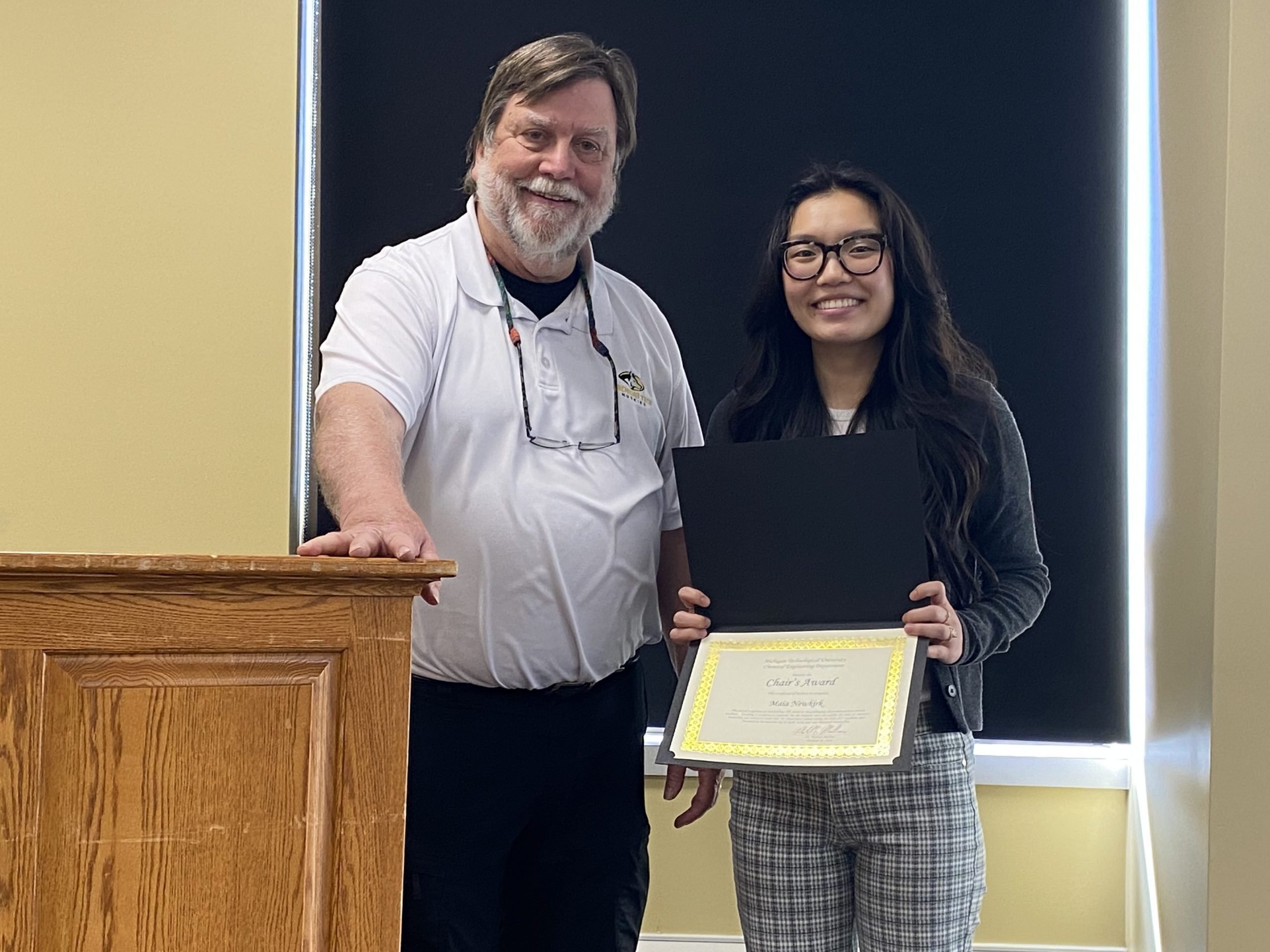Chemical Engineering students JoAnn Henry, Owen Stauffer, and Emily Johnson were all featured in Michigan Tech’s 25th anniversary of Design Expo!
The Graduate School announced Michigan Tech’s Summer 2025 Finishing Fellows. Please congratulate Chemical Engineering student Grace Dykstra on this amazing accomplishment!
The Graduate School announced Michigan Tech’s Summer 2025 Finishing Fellows. Please congratulate Chemical Engineering student Palas Kamlakar Borkar on this accomplishment.
The Graduate School has announced the winners of the Summer 2025 Finishing Fellowship.
Congratulations to the following Chemical Engineering student winners:
- Palas Borkar
- Grace Dykstra
- Seth Kriz
Michigan Tech’s section of the Society of Women Engineers (SWE) attended their WE Local 2025 conference in Milwaukee, Wisconsin in mid-March. Through the generous support of their corporate sponsors, SWE at Michigan Tech was able to send 12 students to attend professional development sessions, network with industry professionals and members of other SWE sections, and bond with their fellow Michigan Tech Huskies.
The Graduate School announced that Seth Kriz, Ph.D. student in chemical engineering, has been selected to represent Michigan Tech as a nominee for the Midwestern Association of Graduate Schools (MAGS) Excellence in Teaching Award. Congratulations to Seth on this significant achievement.
Kriz’s journey is a testament to his dedication to both research and teaching. In his nomination materials, he shares a powerful anecdote about an early college experience that ignited his passion for engineering and ultimately led him to Michigan Tech. This pivotal moment involved his engineering physics professor, Professor Joe, who spent two hours helping him debug a program. This experience instilled in Kriz a deep appreciation for the impact of dedicated teaching.
Inspired by Professor Joe and other mentors, Kriz has pursued his own passion for education. Read about his philosophy of teaching and accomplishments at Michigan Tech at the Graduate School Newsblog.
Huskies who participate in Michigan Tech’s Enterprise Program learn how to partner with industry and get the kind of experience that employers are looking for when hiring. In the case of the Consumer Product Manufacturing Enterprise (CPM) OneTumbler Team, the research they conducted for their project also led to a publication credit and fewer single-use beverage containers on campus.
Hear from 2024 chemical engineering graduate Jacqui Foreman, who led the CPM OneTumbler Team, on the College of Engineering Blog.
The Health Research Institute (HRI) at Michigan Tech is pleased to announce Spring Graduate Fellowship awardees for 2025. Congratulations to all recipients!
HRI Spring Fellowship awardees are:
- Grace Dykstra, Chemical Engineering
- Kan Wang, Biomedical Engineering
HRI Student Fellowships are awarded three times a year. More information can be found on the HRI website.
The Health Research Institute (HRI) at Michigan Tech is pleased to announce the winners of the poster and oral presentation sessions from our annual Student Research Forum, which was held on Nov. 20. Congratulations to the following:
Poster Session:
- First Place — Taravat Sarvari, Chemical Engineering
- Second — Grace Dykstra, Chemical Engineering
- Third — Natalia Krakhaleva, Chemical Engineering
Oral Presentations:
- First Place — Ahmad Bshennaty, Biomedical Engineering
- Second Place — Kamand Sedaghatnia, Chemistry
- Third Place — Victoria Santillan, Biomedical Engineering
For more information on the Institute, please visit the HRI website.
